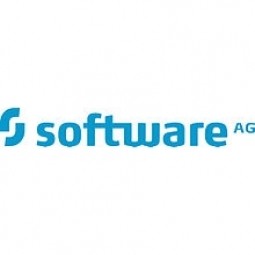Customer Company Size
Large Corporate
Region
- America
Country
- United States
Product
- Adabas & Natural
- Linux
Tech Stack
- Mainframe
- Open Systems
Implementation Scale
- Enterprise-wide Deployment
Impact Metrics
- Cost Savings
- Productivity Improvements
Technology Category
- Infrastructure as a Service (IaaS) - Cloud Computing
Applicable Industries
- Cities & Municipalities
Applicable Functions
- Human Resources
- Business Operation
Use Cases
- Process Control & Optimization
- Real-Time Location System (RTLS)
Services
- System Integration
- Cloud Planning, Design & Implementation Services
About The Customer
The Mississippi Department of Human Services serves one in four of the state’s 3 million citizens through public-assistance programs, social services, and support for children, low-income individuals, and families. The agency exists to serve the state’s citizens in their time of need. That could mean providing a family short-term financial help, making sure children get nutrition, helping a person reach self-sufficiency, or assuring an aging person can live with dignity. The people who staff the department are “life changers,” says Executive Director John Davis. The systems that empower them are “life critical,” explained CIO Mark Allen. Those systems process, for example, $360+ million in child support and $1 billion in nutritional aid a year.
The Challenge
The Mississippi Department of Human Services faced the challenge of modernizing their systems to optimize services. They needed to invest smartly in IT to save funds for social programs, build on the stability of proven core systems, be equipped to leverage new innovations, and adapt to changing federal regulations. The systems that were in place were built with Adabas & Natural over 25 years ago. While these systems were reliable in processing data for welfare, economic assistance, payments tracking, and other social programs, they were mainframe-based, which meant that case workers couldn’t easily access the latest data or build new innovations.
The Solution
The solution involved application modernization and system integration led by Cambria Solutions with Software AG Professional Services. The department decided to rehost rather than replace their systems. After 18 months of careful planning and delivery, the department made a record-setting rehosting to Linux—five systems moved in four days with no unplanned downtime. By rehosting, Allen’s team not only reused valuable business logic but they reduced modernization costs drastically. And now on an open system, the department is primed to bolt on new technologies to address future needs. In the second phase of its modernization, the department has worked with Cambria to take advantage of the new open systems environment to harness new technologies.
Operational Impact
Quantitative Benefit

Case Study missing?
Start adding your own!
Register with your work email and create a new case study profile for your business.
Related Case Studies.

Case Study
Turning A Stadium Into A Smart Building
Honeywell created what it called the “intelligent system” for the National Stadium in Beijing, China, turning the venue for the opening and closing events at the 2008 Summer Olympics into a “smart building.” Designed by highly controversial artist Ai Weiwei, the “Bird’s Nest” remains one of the most impressive feats of stadium architecture in the world. The 250,000 square meter structure housed more than 100,000 athletes and spectators at a time. To accommodate such capacity, China turned to Honeywell’s EBI Integrated Building Management System to create an integrated “intelligent system” for improved building security, safety and energy efficiency.
.png)
Case Study
Smart Street Light Network (Copenhagen)
Key stakeholders are taking a comprehensive approach to rethinking smart city innovation. City leaders have collaborated through partnerships involving government, research institutions and solution providers. The Copenhagen Solutions Lab is one of the leading organizations at the forefront of this movement. By bringing together manufacturers with municipal buyers, the Copenhagen Solutions Lab has catalyzed the development and deployment of next-generation smart city innovations. Copenhagen is leveraging this unique approach to accelerate the implementation of smart city solutions. One of the primary focus areas is LED street lighting.

Case Study
Buoy Status Monitoring with LoRa
The Netherlands are well-known for their inland waterways, canals, sluices and of course port activities. The Dutch Ministry of Infrastructure indicates that there are thousands of buoys and fixed items in and near water environments that would profit from IoT monitoring. One of the problems with buoys for example, is that they get hit by ships and the anchor cable breaks. Without connectivity, it takes quite some time to find out that something has happened with that buoy. Not to mention the costs of renting a boat to go to the buoy to fix it. Another important issue, is that there is no real-time monitoring of the buoys at this moment. Only by physically visiting the object on the water, one gains insight in its status.

Case Study
Barcelona Case Study
Barcelona’s heavy traffic and its associated high levels of pollution were the primary factors that motivated some companies and universities to work on strategies for improving traffic in the city centre. Bitcarrier is one of the technologies involved in the In4Mo Project, whose main objective is to develop the applications that form the core of smart mobility, one of the fundamental pillars of the smart city concept.

Case Study
China Mobile Smart Parking
Smart Parking, powered by NB-IoT technology, is making it easier for drivers to find free parking spots. Cities can better manage their parking assets and maximize the revenue available to them as a result. Drivers searching for parking create congestion and pollution by circling and hunting for available parking. Smart Parking services are able to significantly ease these problems by guiding a driver directly to a parking space.








